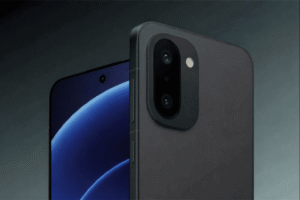In a significant step that could reshape battlefield communications in Ukraine, Starlink direct-to-cell satellite technology has just passed its first real-world test, and the results mark a major turning point in wartime connectivity.
A Seamless First Step
Starlink has been serving as a backbone for Ukrainian communications since early 2022, after traditional networks were disrupted by Russian attacks.
Rapidly delivered by SpaceX and partner governments, including thousands of terminals funded by Poland and the United States, Starlink provided encrypted, low-latency connections that proved crucial on the front lines.
But until now, Starlink also relied heavily on dish-based terminals. Direct-to-cell capability removes that obstacle, instantly transforming ordinary smartphones into satellite-connected devices.
For civilian evacuees, medics, journalists, and soldiers, this means built-in resilience in the event of a network blackout.
Related Articles: Realme 15x 5G launched in India: Powerful 7,000mAh battery and 50MP camera revealed
Real World Impact and Expansion Plans
Kyivstar has confirmed that direct-to-cell service will be available for messaging by the end of 2025. Full mobile satellite broadband and voice services are expected to be launched by mid-2026. Thus, Ukraine is poised to become the first European country to implement this innovation on a large scale.
Technicians across the country, many of whom are part of a self-organized network of tech-savvy volunteers, continue to support and repair Starlink terminals, ensuring connectivity remains intact despite artillery shelling and infrastructure collapse.
Challenges Remain: Funding and Redundancy

Starlink’s dominance is not undisputed. Poland has been the largest donor of Starlink kits, providing approximately 30,000 terminals and with annual expenditures reaching approximately $89 million. However, recent legislative hurdles in Poland have put funding at risk. However, the Ukrainian digital minister is confident that funding will continue with new legislation currently underway.
Meanwhile, disruptions, sometimes intentional and sometimes caused by technical problems, have prompted Kyiv to develop internal network backups to ensure that critical operations are not affected.
Related Articles: NatWest Launches Initiative to Back Indian Entrepreneurs
A Shifting Landscape
Europe, once an isolated observer, is now racing to develop its own backup satellite solutions. Major operators such as SES, Hisdesat, Viasat, and Eutelsat are exploring alternatives, but none can match Starlink’s capacity or rapid deployment.
Elon Musk has downplayed fears of a sudden shutdown, stating that Starlink will remain active and that shutting it down would collapse the military front, emphasizing its role as the backbone of Ukrainian defense.
FAQs
What exactly was tested in Ukraine?
Starlink’s direct to cell technology was tested in Ukraine’s Zhytomyr region. The trial covered a 200 square kilometer area and successfully delivered basic messaging service via 4G smartphones with no extra hardware required.
How fast was the connection?
The test achieved about 3 Mbps download and 0.5 Mbps upload speeds, comparable to third generation networks and sufficient for SMS and messaging apps like WhatsApp.
When will citizens be able to use this directly
Ukraine is slated to launch satellite messaging services using direct to cell by the end of 2025. Full satellite broadband and voice capabilities are expected by mid 2026.
Why is Starlink so critical for Ukraine
Starlink has become essential due to its resilience to jamming, encryption, and ability to bypass damaged infrastructure. It supports military coordination, medical aid, and daily life even under relentless assault.
What risks remain for Starlink coverage in Ukraine
Funding remains a key concern, especially from Poland, which underwrites thousands of terminals. There have also been intentional outages and technical disruptions, spurring Kyiv to build alternative communication networks as backups.
Starlink’s successful direct-to-cell test is more than just a technological breakthrough. It marks a paradigm shift in wartime communications, where connectivity is as dynamic and flexible as the people who rely on it.







